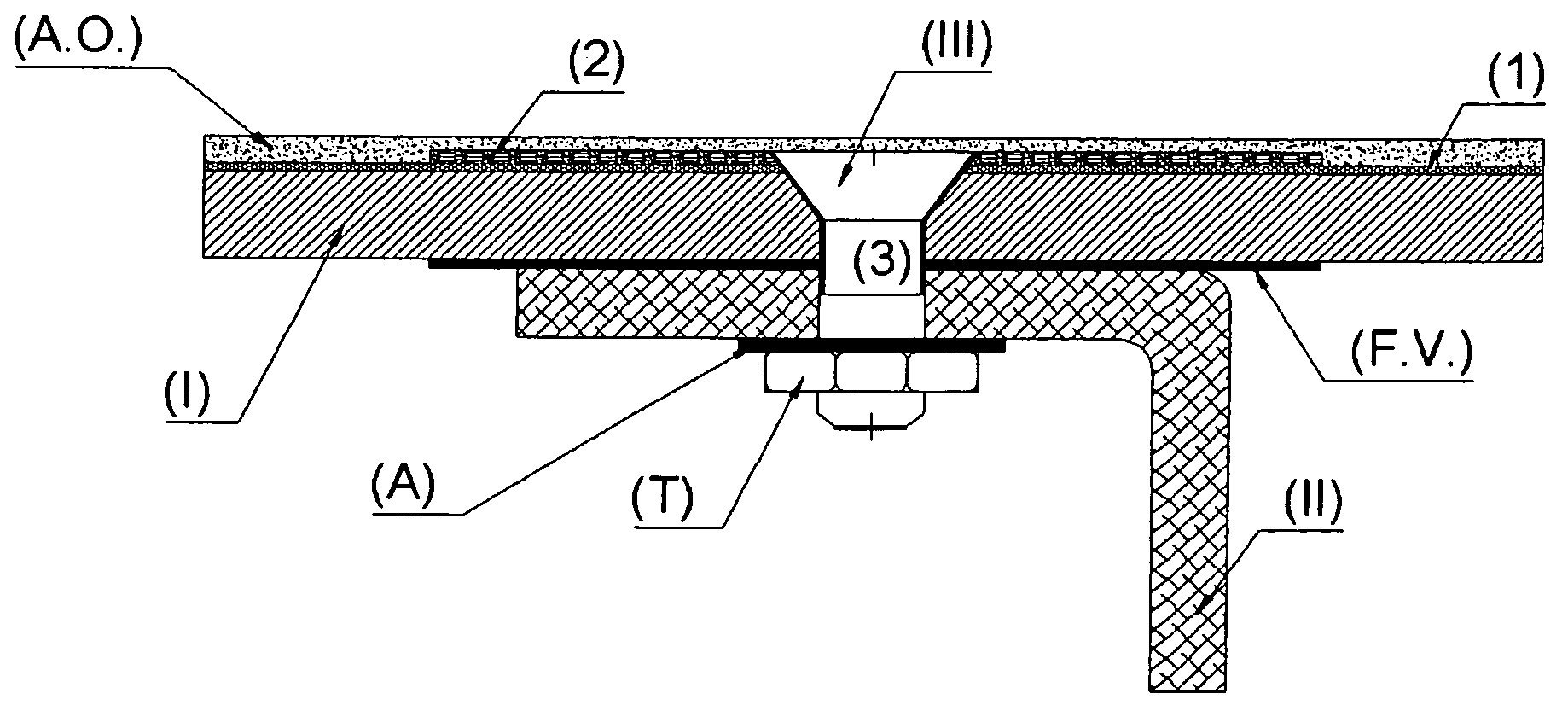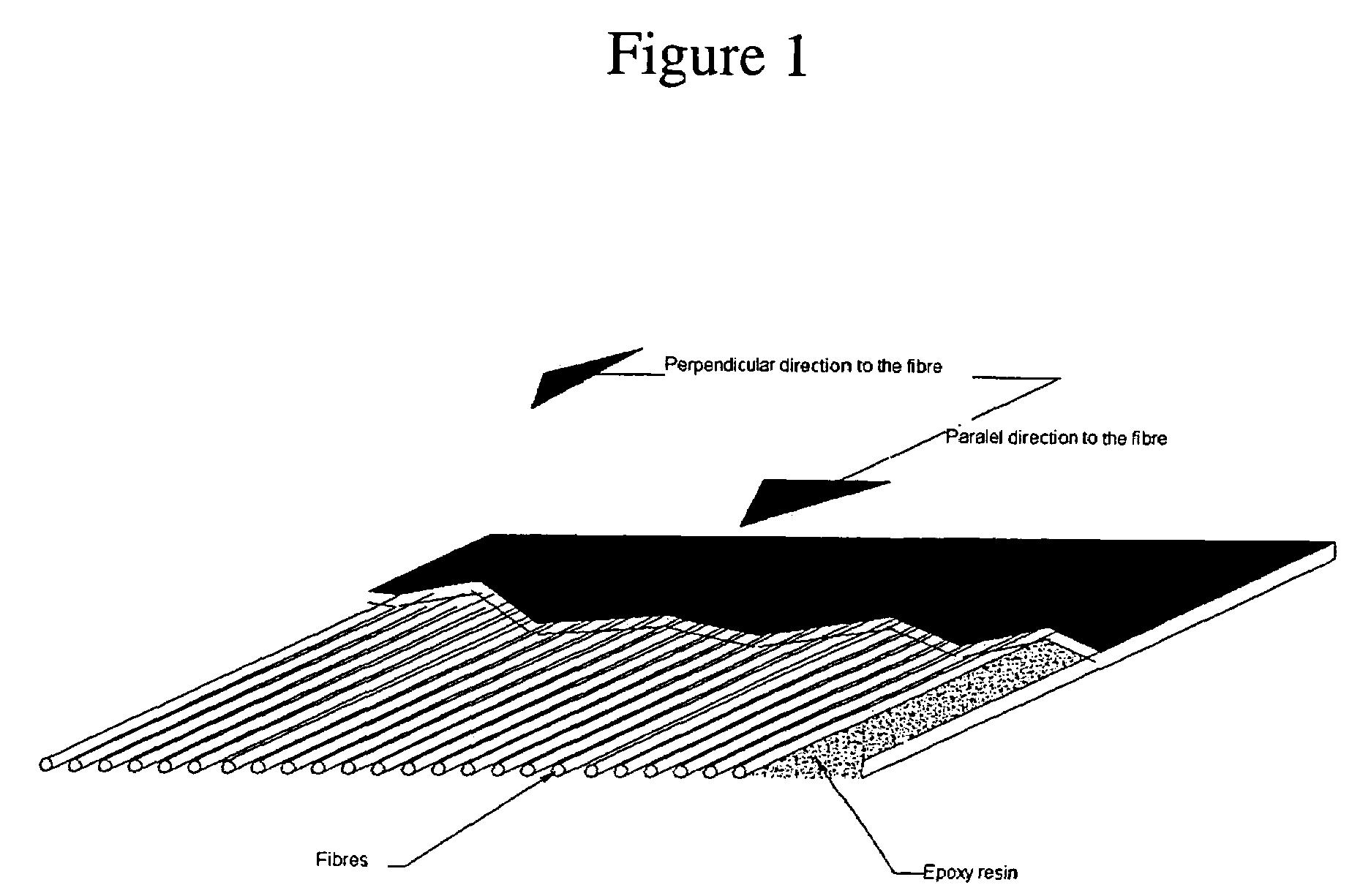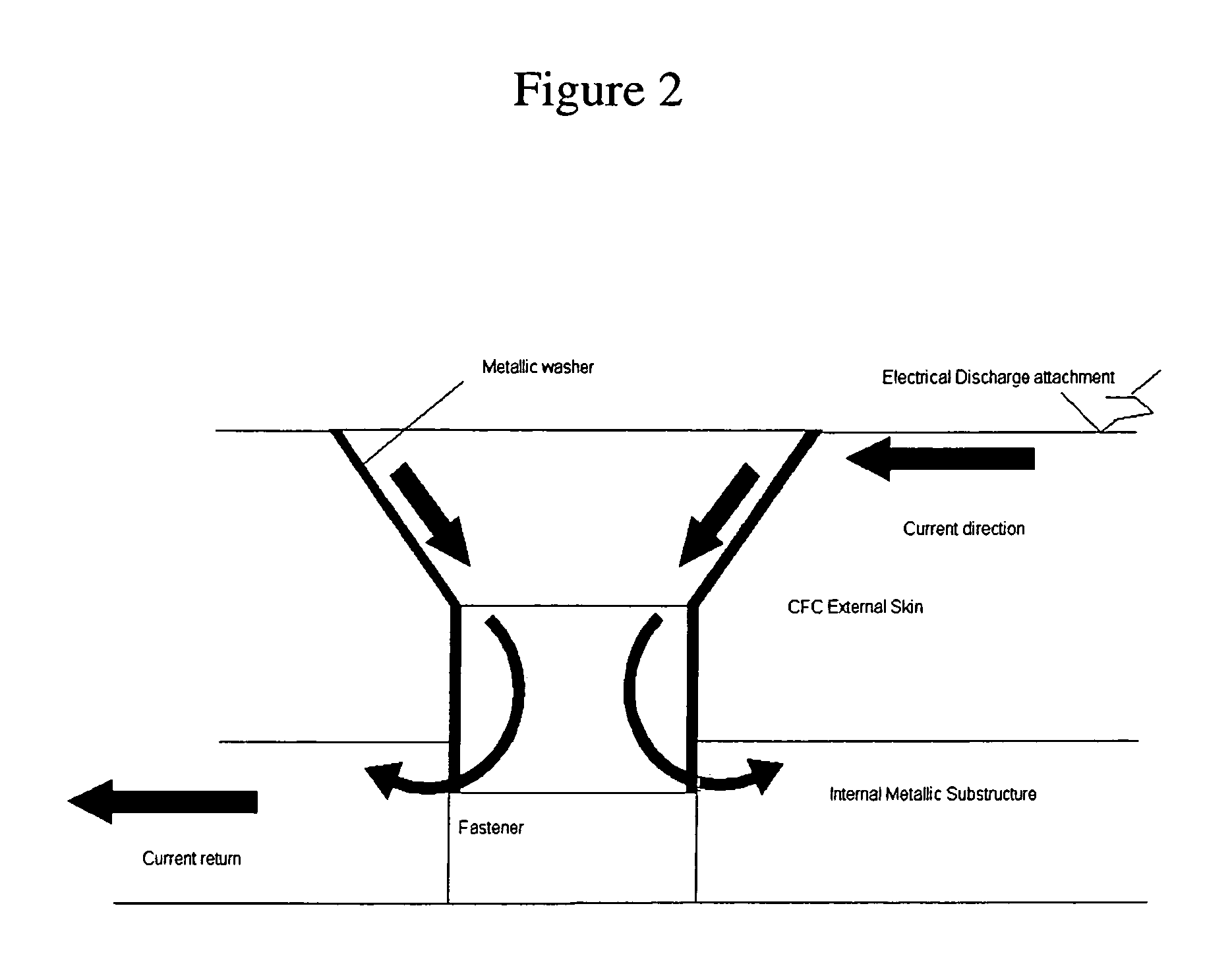Lightning strike protection system for aircraft fuel tanks made of low electrical conductivity composite material
a composite material and protection system technology, applied in the field of low electrical conductivity composite material lightning strike protection system for aircraft fuel tanks, can solve the problems of low conductivity of composite material, failure of mechanical properties, lack of leakage tightness,
- Summary
- Abstract
- Description
- Claims
- Application Information
AI Technical Summary
Benefits of technology
Problems solved by technology
Method used
Image
Examples
Embodiment Construction
[0013]The herewith revealed protection system will treat to minimize the damage provoked to fuel tanks made of composite material (commonly used nowadays for aeronautic structures) by channelling the electric current that an ambient flash liberates by lightning strike or any other high intensity electric discharges. The dispersion of the electric current will thus be helped and low electrical resistance conducting ways be allowed. The severe structural damage can be avoided in this way if a lightning strikes onto the high electrical resistivity parts which integrate the airplane structure.
[0014]The system will consider a global structure at its greatest part made of a low conductivity composite material (such as the carbon fibre material) having internal items or a substructure that may be both metallic or composite made of. In general, and as previously described, the composite materials have a low electrical conductivity in a direction perpendicular to the fibre, so that a severe ...
PUM
| Property | Measurement | Unit |
|---|---|---|
| temperature | aaaaa | aaaaa |
| distance | aaaaa | aaaaa |
| thick | aaaaa | aaaaa |
Abstract
Description
Claims
Application Information
 Login to View More
Login to View More - R&D
- Intellectual Property
- Life Sciences
- Materials
- Tech Scout
- Unparalleled Data Quality
- Higher Quality Content
- 60% Fewer Hallucinations
Browse by: Latest US Patents, China's latest patents, Technical Efficacy Thesaurus, Application Domain, Technology Topic, Popular Technical Reports.
© 2025 PatSnap. All rights reserved.Legal|Privacy policy|Modern Slavery Act Transparency Statement|Sitemap|About US| Contact US: help@patsnap.com



